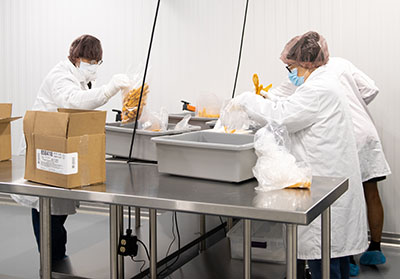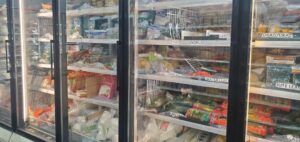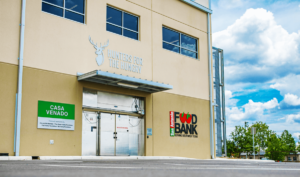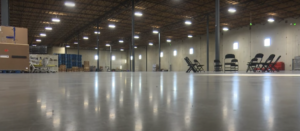Second Harvest Heartland is prepared to greatly increase the amount of meat it can accept and distribute, thanks to a temperature-controlled clean room it opened this summer.
The cold clean room lets the food bank accept larger quantities of bulk meat donations by ensuring the safety and hygiene of the meat during handling. Second Harvest Heartland expects it will be able to increase the amount of meat it sources to 9 million pounds in 2023, up from a projected 5.4 million pounds in 2021.
The Minneapolis-based food bank joins a small group of food banks, also based in the Midwest, that already have cold clean rooms. These include Arkansas Food Bank; Omaha-based Food Bank for the Heartland; Regional Food Bank of Oklahoma; Kansas City-based Harvesters – The Community Food Network, and Houston Food Bank.
Cold clean rooms help food banks meet clients’ ever-persistent demand for meat, while also fulfilling the food safety and temperature requirements for storing, repacking and shipping meat.
Second Harvest Heartland previously had to limit the amount of bulk meat it accepted because only its on-site meal programs could handle large-sized bulk quantities. In the clean rooms, volunteers can now pack ready-to-eat foods into sizes appropriate for distribution to food pantries and other meal programs, making the high-demand foods much more accessible.
“We can accept truckload quantities of many types of bulk meat donations and break it down into smaller family-size portions,” said Alison Griffin, Director of Communications at Second Harvest Heartland. “This applies to any frozen meat or egg donations that are individual quick freezing (IQF). We estimated that this could increase the amount of frozen meat protein to our network by 500,000 pounds annually within three years.”
In addition, Second Harvest Heartland can accept more pounds from current donors that offer both retail-packed and bulk quantities, such as Jennie-O, and from organizations that typically are not able to donate, such as US Foods or Cargill’s egg facility, Griffin said.
The temperature-controlled clean room, supported by Schwan’s Corporate Giving Foundation, is housed within the food bank’s new 24,000-square-foot volunteer center, which sits alongside its new 233,000-square-foot warehouse, opened in spring 2020.
The clean rooms were built to rigorous USDA guidelines and undergo regular inspection. Volunteers receive extra training and are required to wear food safety apparel, such as lab coats, gloves, shoe covers and hairnets.
A USDA inspector assigned to the Second Harvest Heartland facility conducts inspections before or after every volunteer shift, Griffin said. “Basically, we are being audited every day we operate the temperature-controlled clean room, in addition to a full annual review of our food safety plans with a team of USDA inspectors,” Griffin said.
The new facility also has two dry clean rooms where volunteers repack large quantities of dry goods like cereal. Opened in spring 2021, the dry clean rooms let volunteers “take ready-to-eat items like cereal received in bulk and bag, weigh, and seal them into more manageable quantities,” Griffin said. “When we didn’t have a clean room, we had to turn those donations down.” –– Maura Keller
Maura Keller is a Minneapolis-based freelance writer and editor.
CAPTION ABOVE: Second Harvest Heartland’s cold clean room is allowing it to accept and distribute more meat.
Like what you’re reading?
Support Food Bank News







